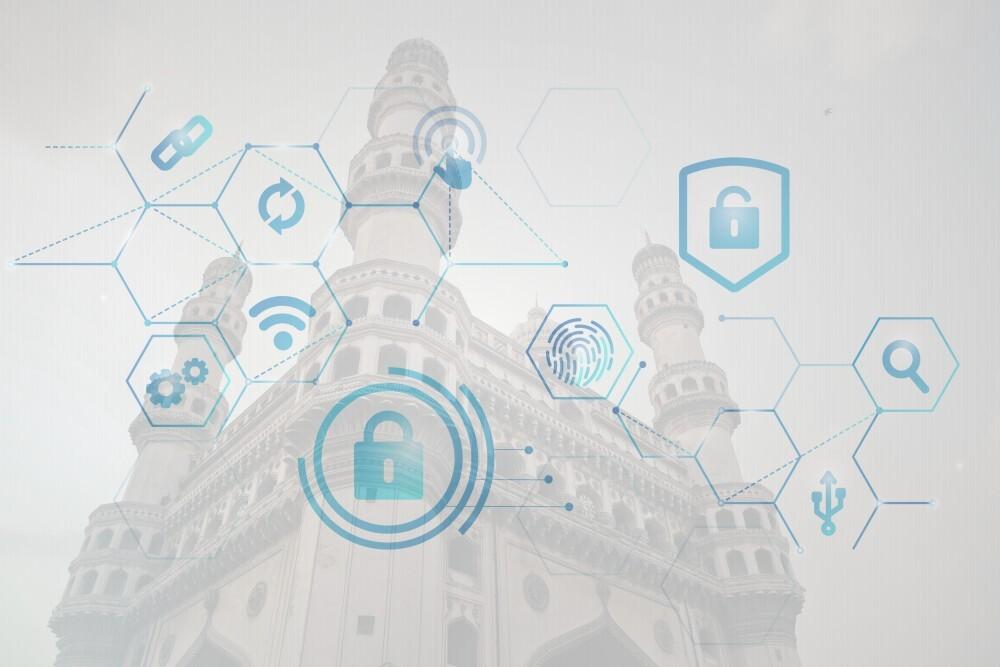
With the increasing dependence on technology, cyber attacks have become a major concern for individuals and organisations alike. However, the integration of artificial intelligence in cybersecurity has emerged as a promising solution to secure company assets and protect user data.
The use of artificial intelligence in cybersecurity can enhance cyber threat intelligence, automate labour-intensive tasks, rapidly identify risks, and reduce response time, allowing cybersecurity professionals to focus on higher-level tasks.
In this blog, we will explore the role of AI in the cyber realm and its potential to transform the cybersecurity landscape.
Need for Advanced Cybersecurity Measures

As the digital landscape evolves, cybersecurity threats become increasingly complex and sophisticated. Hackers are constantly coming up with new ways to breach security measures, and traditional solutions are no longer enough to protect against these attacks. There is a growing need for advanced technologies such as AI/ML to help address these challenges through cybersecurity automation.
How is artificial intelligence in cybersecurity revolutionising the threat detection & response landscape?
AI-powered platforms can analyse massive amounts of data faster than traditional approaches. It utilises cyber threat intelligence to detect swiftly and respond to potential incidents.

It automates threat detection, incident response, and vulnerability management, while predicting and preventing future threats through predictive analytics. AI also enhances employee training on security best practices, including identifying phishing attacks.
Faster threat detection: AI algorithms analyse real-time data, detecting threats as they occur and alerting security personnel immediately. This enables businesses to respond quickly and prevent significant damage.
Improved accuracy and efficiency: AI-powered systems can quickly and accurately identify patterns and anomalies indicative of cyber attacks, outperforming traditional security tools. AI is an efficient and effective tool for detecting and mitigating cyber threats.
Cost savings: Automation of cybersecurity operations through AI reduces the need for human input, resulting in lower costs. AI algorithms analyse data, detect threats, and provide detailed reports and alerts, reducing the time and effort required for security management.
Predictive insights:
AI analyses historical data to detect trends and patterns, providing businesses with predictive insights. This helps them stay ahead of emerging threats and implement mitigation strategies proactively.
Training and education:.jpeg)
AI can support businesses in educating their workforce on the latest security best practices. This ensures enhanced cybersecurity awareness and skills within the organisation.
Challenges of Using Artificial Intelligence in Cybersecurity
.jpeg)
Inherent biases in machine learning algorithms might lead to erroneous or unfair decisions, especially within the realm of cybersecurity. It's vital that we recognize and address these biases to create robust AI-based security systems.
Organizations must acknowledge the possible biases in machine learning algorithms for successful AI integration in cybersecurity. They must devise strategies to minimize these effects. Moreover, updating
the AI system to accommodate evolving threats is essential.
The future of AI-powered Cybersecurity
As AI continues to evolve, it will become more sophisticated in identifying and responding to cyber threats.

1. Smart learning: Spotting threats and improving performance through data analysis.
2. Adaptive security: Learning from past incidents and adjusting defences to counter new threats.
3. Learning from simulated attacks: Enhancing real-world threat detection and response capabilities through simulated attack analysis.
4. Transfer learning: Applying knowledge from one task to another for efficient adaptation to new threats.
Conclusion
In conclusion, the use of artificial intelligence in cybersecurity has already begun to revolutionise the industry and is poised to continue to improve threat detection and response techniques. While there are potential biases and challenges to using AI in cybersecurity, its potential to evolve and adapt to new cyber threats makes it a crucial element in protecting against cyberattacks in the digital age.





